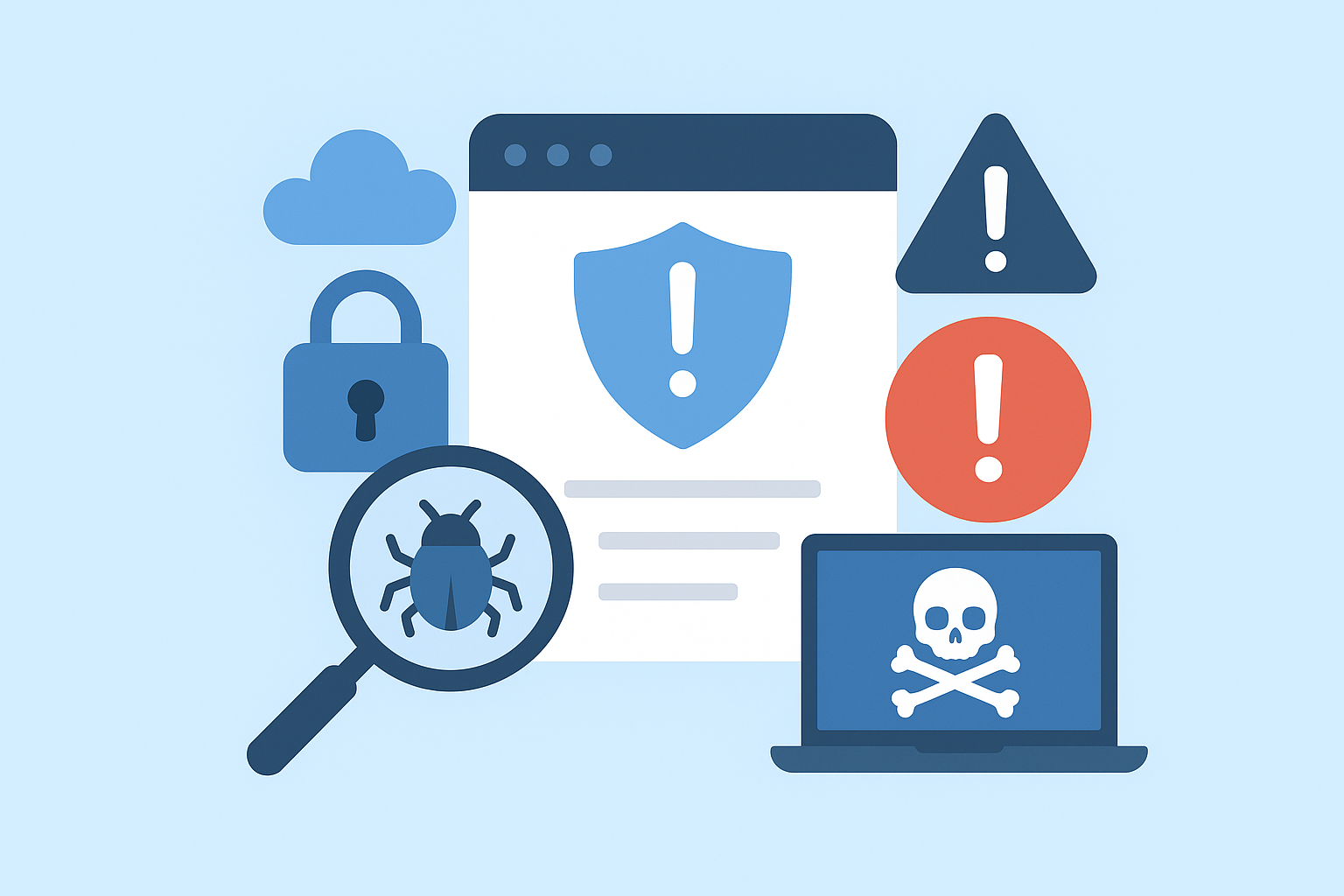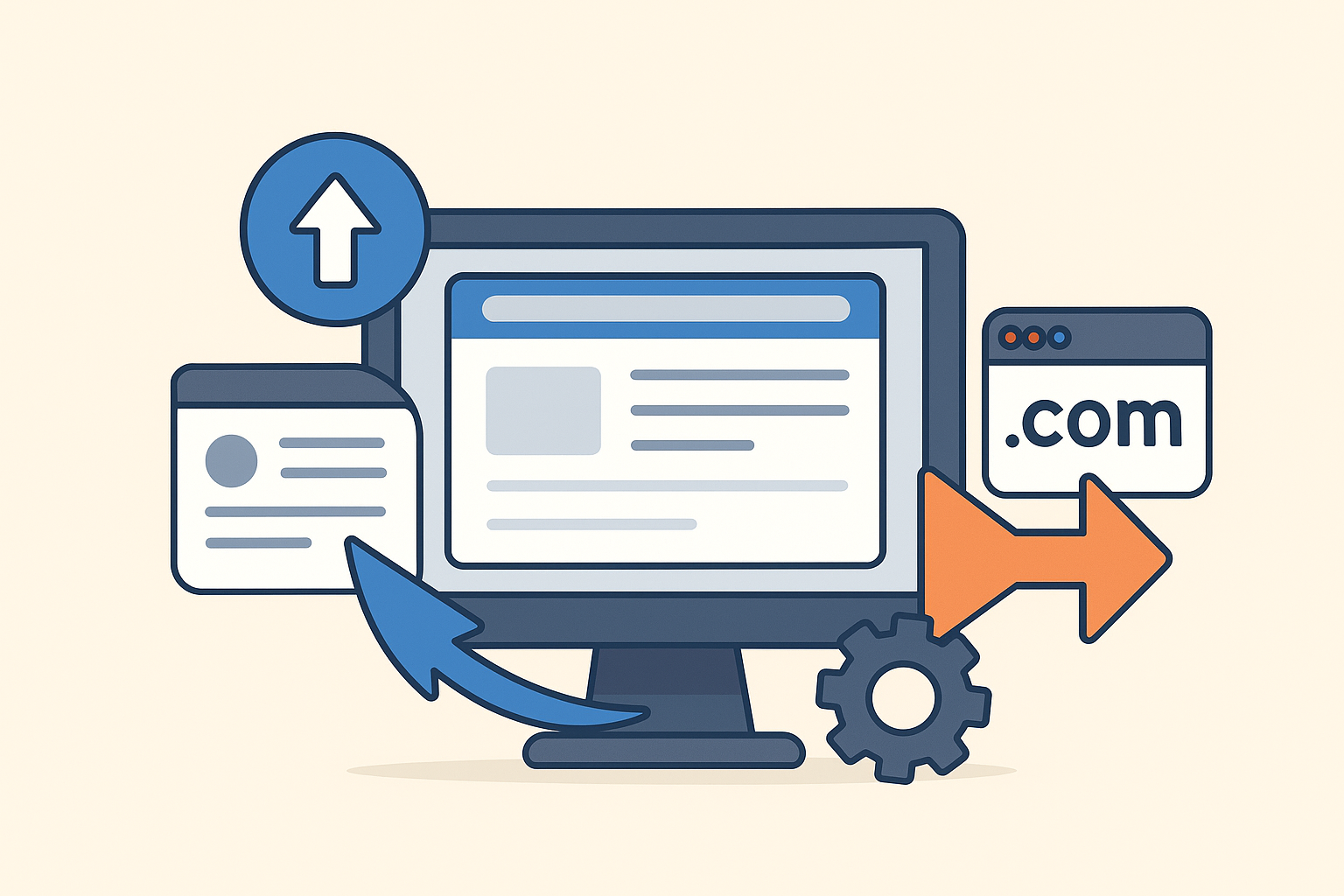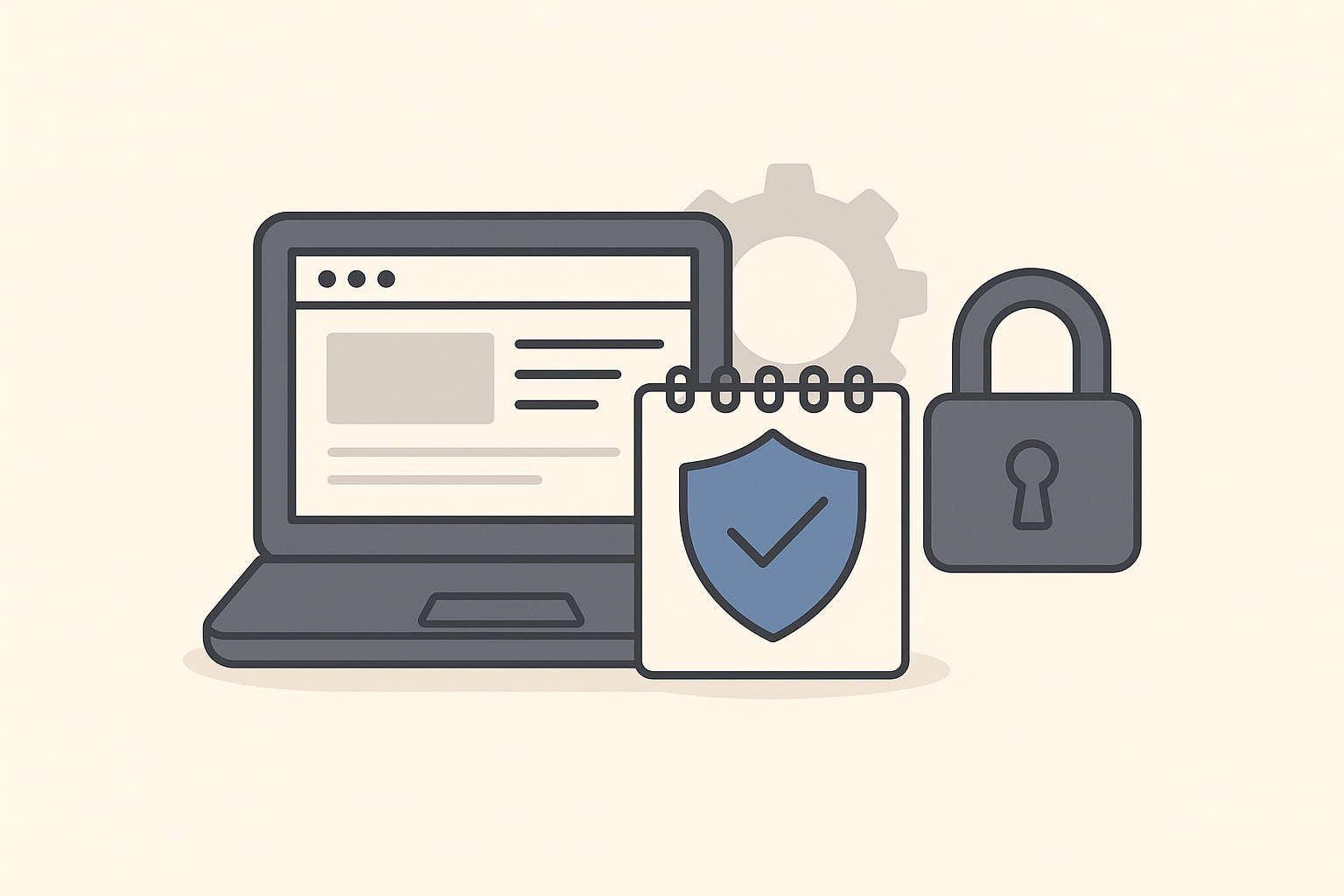In the digital age, protecting your website from cyber threats is more crucial than ever. A Website Vulnerability Check is the foundation of your online security strategy. It helps you detect weak spots, potential entry points, and security loopholes before hackers exploit them. Whether you manage an eCommerce store, a blog, or a corporate website, ensuring your site’s security should be your top priority. Performing regular website vulnerability assessments not only safeguards sensitive data but also strengthens your website’s reputation and reliability. By identifying and resolving these vulnerabilities early, you protect your business from devastating cyberattacks and maintain your customers’ trust.
Introduction
In today’s fast-paced online world, where digital presence defines brand success, a Website Vulnerability Check plays a vital role in ensuring the integrity and protection of your website. Cybercriminals are constantly developing advanced methods to exploit weak points within websites, from outdated plugins to unsecured databases. This makes it essential for website owners and businesses to stay proactive and perform regular vulnerability assessments. By identifying potential risks before they are exploited, businesses can maintain strong digital defenses and protect valuable customer information.
At FixHackedSite, we understand the importance of a robust cybersecurity strategy. Our experts specialize in analyzing, detecting, and fixing vulnerabilities that threaten your website’s performance and safety. We believe prevention is far more effective than damage control, which is why a routine website vulnerability check is the foundation of every secure website.
Furthermore, a comprehensive vulnerability check not only improves your website’s security but also enhances your SEO rankings, customer trust, and compliance with data protection regulations. When your website is secure, it performs better and retains visitors longer, giving you an edge over competitors who overlook this critical aspect of maintenance.
Understanding the Concept of Website Vulnerability Check
A Website Vulnerability Check is an in-depth examination of your website’s system to identify potential security flaws that can be exploited by hackers. These vulnerabilities can occur in many areas, such as outdated CMS versions, weak passwords, misconfigured servers, or insecure plugins. By running a thorough check, you can detect these weaknesses before they lead to serious breaches or data theft. It acts as an early warning system that prevents minor issues from becoming major threats.
In today’s digital ecosystem, hackers are not only targeting large corporations but also small and medium-sized websites. This means no site is too small to be targeted. Performing vulnerability scans regularly helps uncover hidden dangers that may not be visible to the untrained eye. These scans evaluate your site’s security posture, helping you understand where your defenses are strong and where improvements are needed.
Ultimately, the goal of a vulnerability check is to create a safer online environment for both you and your visitors. It ensures your website remains compliant with security standards while minimizing downtime, reputational damage, and financial losses. A single unpatched vulnerability can lead to data theft or a complete site takeover, making regular checks essential for long-term website health and credibility.
Why Every Website Needs a Vulnerability Check
Every website, regardless of its size or purpose, contains sensitive information that can attract cybercriminals. A Website Vulnerability Check helps safeguard this data by identifying security weaknesses before attackers can exploit them. Websites are built with complex code structures and third-party integrations, which can unintentionally open doors for hackers. Regular checks ensure that these vulnerabilities are detected and fixed promptly, maintaining the website’s overall stability.
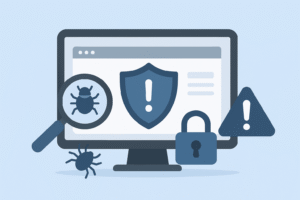 Cyberattacks can cause severe damage, including data loss, downtime, or even complete server compromise. The longer a vulnerability goes undetected, the greater the risk becomes. Performing consistent checks reduces the window of opportunity for attackers and helps maintain the trust of your visitors. In a world where data breaches make headlines, users are more likely to engage with websites that prioritize security and transparency.
Cyberattacks can cause severe damage, including data loss, downtime, or even complete server compromise. The longer a vulnerability goes undetected, the greater the risk becomes. Performing consistent checks reduces the window of opportunity for attackers and helps maintain the trust of your visitors. In a world where data breaches make headlines, users are more likely to engage with websites that prioritize security and transparency.
Furthermore, many organizations are required to follow cybersecurity standards like GDPR or PCI-DSS. Conducting a vulnerability check helps your website stay compliant with these laws, avoiding potential penalties and legal issues. Ultimately, a website vulnerability check is not just a technical process—it’s an investment in your website’s safety, credibility, and long-term performance.
Common Types of Website Vulnerabilities
Understanding the various types of vulnerabilities is the first step in preventing cyberattacks. The most common vulnerabilities include SQL injections, cross-site scripting (XSS), malware infections, weak passwords, and unsecured configurations. Each of these can severely compromise your website’s integrity and the safety of your visitors. A Website Vulnerability Check helps identify these weaknesses, allowing you to take corrective measures before any real damage occurs.
For example, SQL injection attacks allow hackers to access and manipulate your website’s database, stealing sensitive information such as usernames and passwords. Similarly, cross-site scripting enables attackers to inject malicious scripts into web pages that users interact with. These types of vulnerabilities can be difficult to detect without professional scanning tools or expertise.
By regularly checking your website for these vulnerabilities, you can drastically reduce your exposure to threats. The process not only involves scanning your website’s code but also analyzing server settings, SSL certificates, and third-party extensions. Fixing these issues early ensures your site remains safe, stable, and trusted by both users and search engines.
The Importance of Regular Security Audits
Performing regular Website Vulnerability Checks is one of the most crucial elements of maintaining a secure and reliable online presence. The digital landscape is constantly changing, with new threats emerging almost daily. Regular security audits help you stay ahead of hackers by identifying vulnerabilities before they become a problem. These checks provide insight into your website’s security posture and ensure that all critical areas are protected against possible exploitation. Without consistent audits, even small weaknesses can evolve into severe issues that compromise your website and reputation.
A security audit is not a one-time task—it’s a continuous process of monitoring and improving. As your website grows, new plugins, code changes, and integrations can introduce fresh vulnerabilities. By conducting periodic audits, you can address these risks immediately, ensuring that your site remains resilient against cyber threats. This proactive approach helps maintain the integrity of your systems, prevents data breaches, and keeps your business running smoothly. Moreover, regular audits reinforce your brand’s credibility, as customers feel safer knowing your site prioritizes security.
Additionally, search engines like Google value secure websites, which means frequent Website Vulnerability Checks can also contribute to better SEO rankings. A secure website provides a smoother browsing experience, fewer interruptions, and faster loading times—factors that boost your visibility and authority online. Regular audits help you maintain not just technical strength but also user trust and search performance, making them an integral part of a successful online strategy.
How Hackers Exploit Website Vulnerabilities
To understand the importance of a Website Vulnerability Check, it’s vital to know how hackers exploit website weaknesses. Cybercriminals often look for outdated software, unpatched plugins, or poorly configured servers to gain unauthorized access. Once they find an entry point, they can steal sensitive data, inject malicious scripts, or take control of your website entirely. Many of these attacks are automated, meaning hackers can target hundreds of websites simultaneously without any manual effort. This makes every site, big or small, a potential victim.
Hackers use a variety of techniques to exploit vulnerabilities. For instance, through SQL injections, they can retrieve confidential data from your database. With cross-site scripting, they manipulate website content to trick users into revealing personal information. Some attackers install malware or create backdoors that allow them to re-enter your system even after removal. Without a proper vulnerability check, these intrusions can go undetected for months, silently damaging your reputation and compromising customer data.
A detailed vulnerability assessment helps close these loopholes before they can be exploited. It provides you with actionable insights on what needs to be fixed immediately and what should be monitored continuously. By staying informed about potential threats, you not only protect your website but also your business’s integrity and future growth. Implementing regular vulnerability checks ensures hackers never find a weak spot to exploit, keeping your website secure and your visitors safe.
Tools and Technologies for Website Vulnerability Scanning
Performing an effective Website Vulnerability Check requires the right set of tools and technologies. These tools automate the process of scanning your website for potential security flaws, misconfigurations, and outdated components. Popular vulnerability scanners like OpenVAS, Nessus, and Acunetix are widely used in the cybersecurity industry. They provide detailed reports that highlight specific risks, categorize them based on severity, and suggest recommended fixes. This helps website owners make informed decisions about their security priorities.
Modern vulnerability scanning tools use advanced algorithms to detect issues such as SQL injections, cross-site scripting, and insecure SSL configurations. Some even integrate with your content management system (CMS), making it easier to monitor your website’s security status in real time. These tools can be customized to perform deep scans across web pages, databases, and server-side scripts, ensuring a comprehensive analysis. For website owners who manage large online platforms, automated scanning is an invaluable asset that saves both time and effort.
However, while tools can detect vulnerabilities, human expertise is essential for interpreting the results correctly. Automated scans can sometimes produce false positives, and understanding which issues pose the greatest risk requires professional evaluation. Combining automated scanners with expert analysis ensures a complete and accurate assessment. This combination of technology and human insight forms the foundation of an effective Website Vulnerability Check, guaranteeing that no critical issue goes unnoticed.
Manual Testing vs. Automated Scanning
When it comes to performing a Website Vulnerability Check, two primary methods are used—manual testing and automated scanning. Each has its strengths, and the best results often come from combining both approaches. Automated scanners can quickly identify common vulnerabilities across large sections of a website, providing an excellent first layer of defense. They efficiently detect outdated software, missing patches, and misconfigurations that could expose your website to threats. However, they may not always detect complex vulnerabilities that require human intuition and experience.
Manual testing, on the other hand, involves cybersecurity experts examining your website’s code, architecture, and infrastructure in detail. They look for logic flaws, authentication issues, and weak encryption that automated tools might overlook. Manual testers simulate real-world attack scenarios to see how your website would respond under pressure. This level of detail ensures that even the most subtle vulnerabilities are uncovered and resolved, offering superior protection for your site and its visitors.
By integrating both manual and automated techniques, you achieve the most accurate results. Automated scans provide speed and consistency, while manual testing brings depth and expertise. Together, they form a comprehensive vulnerability assessment strategy that leaves no stone unturned. For the best security results, your Website Vulnerability Check should include both methods—ensuring your website is protected from every angle and resilient against evolving cyber threats.
The Role of Vulnerability Reports in Strengthening Security
After performing a Website Vulnerability Check, one of the most important outcomes is the vulnerability report. This document provides a detailed overview of the issues discovered during the assessment, including their severity, location, and potential impact. It serves as a roadmap for improving your website’s overall security posture. A comprehensive report not only identifies weaknesses but also offers clear recommendations for remediation. By following these suggestions, website owners can patch vulnerabilities before they turn into serious threats.
Vulnerability reports categorize risks into different levels such as high, medium, and low severity. This classification helps prioritize which issues should be addressed first based on their potential to cause damage. For instance, a high-risk vulnerability might allow attackers to access sensitive user data, while a low-risk issue might only affect minor functions. By understanding the severity of each vulnerability, you can create an actionable security plan that ensures the most critical threats are resolved immediately.
Additionally, vulnerability reports are vital for tracking progress over time. They provide a benchmark for measuring how well your security has improved after implementing fixes. Reviewing these reports regularly helps you stay aware of recurring issues and take preventive measures. In essence, a vulnerability report acts as both a diagnostic and a performance evaluation tool. It empowers you to make informed decisions, strengthen your defenses, and maintain continuous website protection through consistent Website Vulnerability Checks.
Prioritizing and Fixing Identified Vulnerabilities
Once vulnerabilities are identified, the next crucial step is prioritizing and fixing them effectively. Not every vulnerability carries the same level of risk, which is why it’s essential to handle the most severe issues first. High-priority vulnerabilities, such as those that allow unauthorized data access or remote code execution, must be addressed immediately. Fixing these issues involves applying software patches, updating plugins, and securing configuration settings. A proactive response helps prevent hackers from exploiting known weaknesses and ensures your website remains protected.
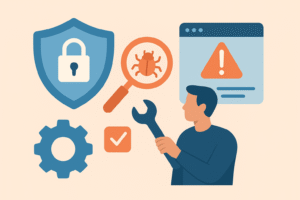 However, fixing vulnerabilities is not just about quick patches. It requires a strategic approach that includes testing updates in a safe environment before deployment. This step ensures that fixes do not interfere with your website’s functionality or create new issues. Additionally, documenting every change made during the process helps maintain a record of improvements and provides valuable insights for future assessments. This systematic process enhances efficiency and ensures that every vulnerability is thoroughly resolved.
However, fixing vulnerabilities is not just about quick patches. It requires a strategic approach that includes testing updates in a safe environment before deployment. This step ensures that fixes do not interfere with your website’s functionality or create new issues. Additionally, documenting every change made during the process helps maintain a record of improvements and provides valuable insights for future assessments. This systematic process enhances efficiency and ensures that every vulnerability is thoroughly resolved.
Furthermore, prioritization also includes continuous monitoring after fixes are implemented. Cyber threats evolve constantly, so even after you patch vulnerabilities, new ones may arise. Conducting follow-up scans and comparing them with previous results ensures that your website remains secure over time. Regularly performing a Website Vulnerability Check helps detect any new risks early, reducing the chances of recurring security problems and maintaining a solid defense against future attacks.
The Connection Between Vulnerability Checks and Website Performance
Many people assume that a Website Vulnerability Check only focuses on security, but it also directly impacts performance. A secure website often performs better because it runs on optimized configurations and clean code. When you fix vulnerabilities like malware infections or outdated scripts, you eliminate factors that can slow down your site. This leads to faster loading times, smoother navigation, and improved user experiences. Security and performance are deeply interconnected, and addressing one often benefits the other.
Infected or compromised websites can consume unnecessary resources, resulting in slower response times and poor performance. Search engines like Google penalize slow-loading or unsafe websites by lowering their rankings. Performing regular vulnerability checks ensures your site stays free from malicious code, maintaining optimal speed and search visibility. As a result, your website not only becomes safer but also more competitive in search results—attracting more organic traffic and enhancing your brand reputation.
Additionally, when your site performs consistently well, visitors are more likely to stay longer and engage with your content. This increases conversion rates and builds user trust. A properly secured and optimized site gives your visitors confidence, knowing that their data is safe while browsing or making transactions. Thus, a Website Vulnerability Check plays a dual role—protecting your site from hackers while simultaneously enhancing its efficiency and overall performance.
How Often Should You Perform a Website Vulnerability Check?
Determining how often to perform a Website Vulnerability Check depends on your website’s structure, activity level, and sensitivity of data. However, cybersecurity experts generally recommend performing checks at least once every quarter. For high-traffic or eCommerce websites that handle sensitive customer information, monthly scans or continuous monitoring are ideal. The more frequently you perform checks, the faster you can identify and address new threats before they cause harm.
Frequent vulnerability assessments ensure that even minor updates or changes in your website do not introduce new weaknesses. Websites that use content management systems (like WordPress, Joomla, or Drupal) are especially prone to vulnerabilities caused by outdated plugins or themes. Performing consistent checks ensures that every new installation, plugin update, or code change does not compromise security. In essence, regular scanning helps you stay one step ahead of attackers who constantly search for unprotected entry points.
Furthermore, frequent Website Vulnerability Checks build a habit of continuous security awareness within your team. They encourage best practices such as updating software promptly, using strong passwords, and monitoring suspicious activities. Treating vulnerability checks as a routine part of website maintenance keeps your digital assets safe and reduces the risk of data breaches. Regular assessments act as your first line of defense against emerging cyber threats, ensuring long-term stability and peace of mind.
The Importance of Penetration Testing
While a Website Vulnerability Check identifies weaknesses in your system, penetration testing takes it one step further by simulating real-world attacks. This process involves ethical hackers intentionally attempting to exploit vulnerabilities to see how your website would perform under actual threat conditions. Unlike automated scans, penetration tests provide a realistic assessment of your site’s security resilience. They help uncover hidden vulnerabilities that standard tools might miss, offering an additional layer of protection. Through this hands-on approach, website owners gain deeper insights into their security posture and can address potential risks more effectively.
Penetration testing is especially important for businesses that handle sensitive customer data, such as payment details or personal information. A successful attack simulation exposes how far an attacker could go within your system and what kind of data could be compromised. By conducting these tests regularly, you can fix identified weaknesses before a malicious hacker exploits them. This proactive approach not only strengthens your defenses but also demonstrates your commitment to cybersecurity compliance and customer protection.
Moreover, penetration testing enhances the credibility of your Website Vulnerability Check results. When combined, both methods provide a holistic view of your website’s defenses—scanning identifies possible issues, while penetration testing confirms their real-world impact. This combination ensures that your website’s security strategy is both thorough and practical, helping prevent potential breaches that could lead to financial and reputational losses.
Real-Time Monitoring and Incident Response
Performing a Website Vulnerability Check is crucial, but true protection comes from real-time monitoring and quick incident response. Continuous monitoring allows you to detect suspicious activity as it happens, reducing the time between a potential attack and your reaction. Tools that track system behavior, login attempts, and data flow help identify patterns that may indicate a breach. By implementing real-time monitoring, you can respond instantly to any irregularities, minimizing potential damage and maintaining business continuity.
Incident response is another vital component of an effective security strategy. Even with the best preventive measures, no website is 100% immune to threats. Having a clear plan in place ensures that your team knows exactly what steps to take in the event of a security breach. This includes isolating affected systems, identifying the cause of the incident, and restoring secure backups. A rapid and organized response helps limit damage and ensures that your website is back online quickly with minimal disruption.
Additionally, integrating real-time monitoring with your Website Vulnerability Check creates a comprehensive protection cycle. Vulnerability scans identify weaknesses before they can be exploited, while monitoring tools provide immediate alerts if an attack occurs. This layered defense strategy ensures your website remains secure 24/7. By staying vigilant and responsive, you protect not only your data but also your reputation and the trust of your users—an invaluable asset in today’s digital landscape.
The Risks of Third-Party Integrations
Many websites rely on third-party tools such as plugins, APIs, and extensions to improve functionality. However, these third-party integrations often introduce new vulnerabilities. A Website Vulnerability Check must include scanning these components to ensure they don’t become entry points for attackers. Outdated or poorly coded plugins can contain security flaws that allow hackers to access sensitive data or take control of your website. This is especially true for platforms like WordPress, where thousands of plugins are available from multiple developers.
When you install third-party components, you place trust in the developers behind them. Unfortunately, not all developers follow strict security practices. Hackers frequently target popular plugins because they know that many websites use them without updating regularly. A single unpatched plugin can put thousands of websites at risk simultaneously. Conducting regular vulnerability assessments helps detect these weaknesses early and prompts you to update, replace, or remove insecure integrations before they cause damage.
Furthermore, businesses must adopt strict policies regarding plugin management and third-party access. Only use tools from reputable developers with a proven history of maintaining their products. Regularly review permissions, remove unused extensions, and verify compatibility after each website update. Integrating these practices into your regular Website Vulnerability Check routine ensures your website remains safe from risks associated with external software, reducing the likelihood of a breach through third-party vulnerabilities.
The Cost of Ignoring Website Vulnerabilities
Ignoring a Website Vulnerability Check can lead to devastating consequences—both financially and reputationally. A single security breach can result in data loss, website downtime, customer mistrust, and even legal repercussions. Repairing the damage after an attack often costs significantly more than implementing preventive measures. In many cases, small businesses never fully recover from cyber incidents due to the financial strain and loss of credibility. Prevention, therefore, is far more cost-effective and sustainable than crisis recovery.
A compromised website can also lead to blacklisting by search engines, resulting in a dramatic drop in traffic and revenue. Visitors who encounter warnings like “This site may be unsafe” are unlikely to return, permanently damaging your brand’s image. Data breaches may also expose your organization to regulatory fines if personal data is compromised. All these consequences can be avoided through consistent vulnerability assessments that detect and eliminate threats before they escalate.
By investing in routine Website Vulnerability Checks, you secure long-term stability for your online business. This investment not only protects sensitive information but also ensures your website continues to operate efficiently and securely. When your site is protected, customers trust your brand, engage more, and are confident making transactions. The cost of neglecting vulnerabilities is far greater than the cost of prevention—making regular checks an essential aspect of every responsible website maintenance plan.
Future-Proofing Your Website Security
The digital landscape evolves rapidly, and so do cyber threats. Future-proofing your website security means taking proactive steps to ensure long-term protection rather than waiting for problems to arise. A Website Vulnerability Check plays a central role in this process by continuously identifying weaknesses and ensuring that your site adapts to the latest security challenges. Future-proofing involves implementing advanced security technologies, maintaining updated software, and adopting flexible strategies that can withstand the constant evolution of cyber risks.
As new attack techniques emerge, older defense systems become outdated. To stay protected, businesses must evolve their security approach by integrating artificial intelligence, automated vulnerability scanning, and behavior-based threat detection. These advanced tools analyze website traffic patterns and identify anomalies before they become major issues. By performing regular vulnerability assessments, you ensure that your website is not only safe today but also resilient against future threats. Staying one step ahead of hackers requires foresight, innovation, and consistency in applying preventive measures.
Furthermore, a forward-thinking approach to cybersecurity boosts user confidence and strengthens your online reputation. Customers are more likely to trust websites that demonstrate commitment to long-term protection. By combining regular Website Vulnerability Checks with other preventive strategies, you build a digital environment that remains secure and trustworthy as technology continues to evolve. In a world where cyber threats grow more sophisticated every day, preparing your website for the future is not an option—it’s a necessity.
Building Trust Through Website Security
Trust is the foundation of any successful online business. Visitors need to feel confident that their data is safe before they interact, sign up, or make a purchase on your website. A Website Vulnerability Check helps you build and maintain that trust by proving your commitment to cybersecurity. When customers know your site is regularly monitored for weaknesses and protected from threats, they are more likely to engage and stay loyal to your brand. Security becomes not just a technical necessity but also a vital component of your brand identity.
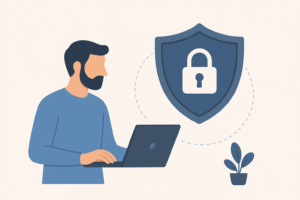 In today’s competitive online environment, trust directly influences customer behavior. Websites that display strong security measures—like HTTPS encryption, updated software, and verified certificates—create a sense of safety and professionalism. On the other hand, unsecured websites deter visitors and harm credibility. Conducting vulnerability checks reinforces transparency and reliability, showing customers that their privacy and safety are top priorities. This emotional assurance leads to stronger relationships and increased conversions.
In today’s competitive online environment, trust directly influences customer behavior. Websites that display strong security measures—like HTTPS encryption, updated software, and verified certificates—create a sense of safety and professionalism. On the other hand, unsecured websites deter visitors and harm credibility. Conducting vulnerability checks reinforces transparency and reliability, showing customers that their privacy and safety are top priorities. This emotional assurance leads to stronger relationships and increased conversions.
Moreover, trust extends beyond customers—it influences how search engines and partners view your website. Secure websites are more likely to be ranked higher and recommended by other reputable sources. By regularly conducting Website Vulnerability Checks, you ensure that your online presence remains both secure and respected. Trust is hard to earn and easy to lose, but with consistent security practices, you can build a reputation that stands the test of time.
Educating Your Team and Maintaining Long-Term Security Awareness
Technology alone cannot guarantee full protection; human awareness plays an equally vital role. Educating your team about cybersecurity best practices is one of the most effective ways to prevent future attacks. A Website Vulnerability Check helps identify weak areas, but ensuring that your employees understand how to maintain security is what keeps those vulnerabilities from reappearing. Training your staff to recognize phishing attempts, handle data responsibly, and follow secure login procedures builds a strong first line of defense against cyber threats.
Regular workshops, internal audits, and awareness campaigns help maintain a security-focused culture within your organization. Team members who understand the importance of updates, secure coding, and data protection are less likely to make mistakes that could compromise your website. Every employee, from developers to content managers, should be aware of the potential risks and their roles in preventing them. This shared responsibility enhances the effectiveness of vulnerability checks and creates a well-rounded security ecosystem.
Additionally, maintaining long-term awareness requires ongoing evaluation and improvement. Cyber threats evolve, and so should your team’s knowledge. Encourage continuous learning and adapt your training programs as new technologies and attack methods emerge. Combining education with regular Website Vulnerability Checks ensures that your business remains secure from both external attacks and internal errors. A knowledgeable team is one of the strongest defenses any organization can have in today’s digital age.
Conclusion
In an era where digital threats grow more sophisticated every day, conducting a Website Vulnerability Check is no longer optional—it’s essential. A secure website protects not only your data but also your brand, reputation, and customer trust. Through regular assessments, you can identify weaknesses early, prevent potential breaches, and ensure compliance with data protection standards. Cybersecurity is a continuous journey that demands vigilance, adaptability, and proactive planning.
At FixHackedSite, we specialize in performing comprehensive vulnerability assessments designed to identify and eliminate threats before they escalate. Our team combines automated scanning tools with expert analysis to deliver accurate, actionable results that strengthen your website’s defense. Whether you’re managing a business website, eCommerce platform, or blog, our goal is to help you achieve maximum protection and long-term stability.
A Website Vulnerability Check is the foundation of a secure and successful online presence. By integrating it into your regular maintenance plan, you ensure that your website remains safe, reliable, and trusted. In the fast-moving digital world, prevention will always be better than cure—and with FixHackedSite by your side, you can rest assured that your website’s security is always one step ahead of evolving threats.
